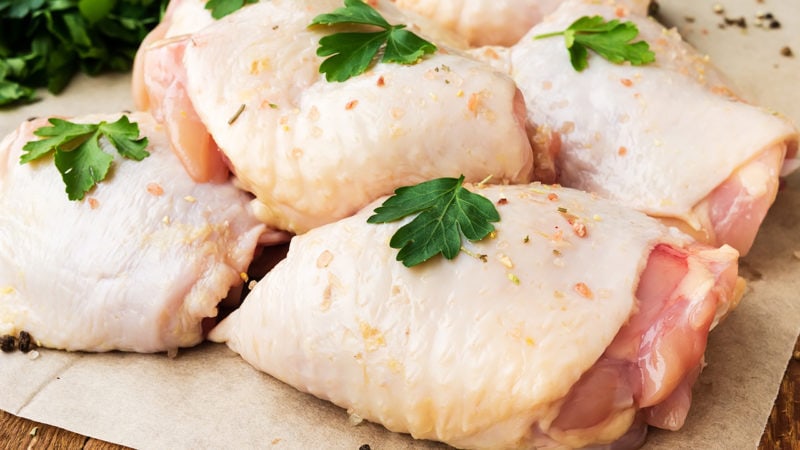Last Updated on January 30, 2025
When it comes to chicken, so often we reach for what we’re used to: Boneless, skinless chicken breasts, wings, tenders, or whatever your favorite cuts are. And while there’s nothing with leaning on those cuts, there are times when you might be better served with something else. Here’s your guide to different cuts of chicken and when to choose each one.
Boneless, Skinless Chicken
It’s hard to beat boneless, skinless chicken breasts, tenders or thighs for convenience. They need barely any prep, they cook relatively quickly, and they’re versatile. Plus, they’re leaner than their bone-in, skin-on counterparts.
Reach for boneless, skinless cuts in recipes that call for cut-up pieces of chicken, like soups, stews, pastas, stir fries and curries. They’re also a good choice for marinating, then grilling or baking — but watch them closely, as they’re more prone to overcooking than their bone-in, skin-on counterparts.
Another thing to consider: Price. Boneless, skinless chicken is typically more expensive than bone-in cuts of chicken because of the labor involved in preparing it for sale. It may be worth it for the convenience on busy weeknights, but if budget is a concern, it may help to swap bone-in, skin-on cuts some of the time.
Cuts and how to cook them
Boneless, skinless breasts:
- Easy Baked Chicken Breasts
- Grilled Greek Marinated Chicken Breasts with Peach and Endive Salad
- Lemon Pepper Chicken Breast with Brown Sage Butter
Tenders:
Boneless, skinless thighs:
- Orzo with Chicken Thighs, Feta, Spinach and Olives
- Roasted Chicken Thighs with Turmeric and Garlic-Yogurt Sauce
- Smoky Citrus Grilled Chicken Thighs
Bone-In Chicken
Cuts of bone-in chicken are versatile and varied; there are quite a few more than there are in the boneless, skinless category.
Along with the familiar breasts and thighs, there are drumsticks, wings and — one of our favorites — whole chicken.
These cuts tend to be less expensive than their boneless, skinless counterparts, since there’s less labor involved in processing them. But another advantage is that bone-in, skin-on cuts tend to be juicier and more succulent.
Bone-in cuts of chicken are often sturdier than their boneless, skinless counterparts, so they hold up to low and slow methods like braising and roasting. The bone serves a purpose: It helps keep the distribution of heat even. Plus, the skin both contains fat that falls into the meat while cooking, and protects the meat from drying out due to the heat of the oven or grill.
Cuts and how to cook them
Chicken thighs:
- Air Fryer Chicken Thighs Stuffed with Chilies, Garlic and Broccolini
- Braised Chicken Thighs with Wine, Artichokes and Crispy Garlic Oil
- Peri-Peri Chicken with Coconut Rice
Drumsticks:
- Grilled Paprika Drumsticks
- Sheet Pan Buttermilk Drumsticks with Spiced Cabbage Slaw
- BBQ Dry-Rubbed Drumsticks
Wings:
- Air Fryer Nashville-Style Hot Chicken Wings
- Crispy Air-Fryer Garlic Chicken Wings with Hot Honey
- Easy Baked Chicken Wings with Tangy Yogurt Dip
Whole chicken:
- Roasted Pasture-Raised Heirloom Whole Chicken
- Slow Roasted Whole Chicken with Olives, Shallots and Lemon
- Easy Roasted Whole Chicken
Bonus: Once you’ve enjoyed your whole chicken, use the carcass to make your own chicken stock. It’s nourishing and delicious, and it cuts food waste. Use it as a base for soup, to cook rice, to flavor sauces — or just sip a cup.
Dennis Keohane is a writer, editor, and former Editorial Director for ButcherBox with a passion for storytelling and food. Combining his love for high-quality ingredients with engaging narratives, he crafts content that inspires home cooks to explore new flavors, techniques, and the joy of cooking.



